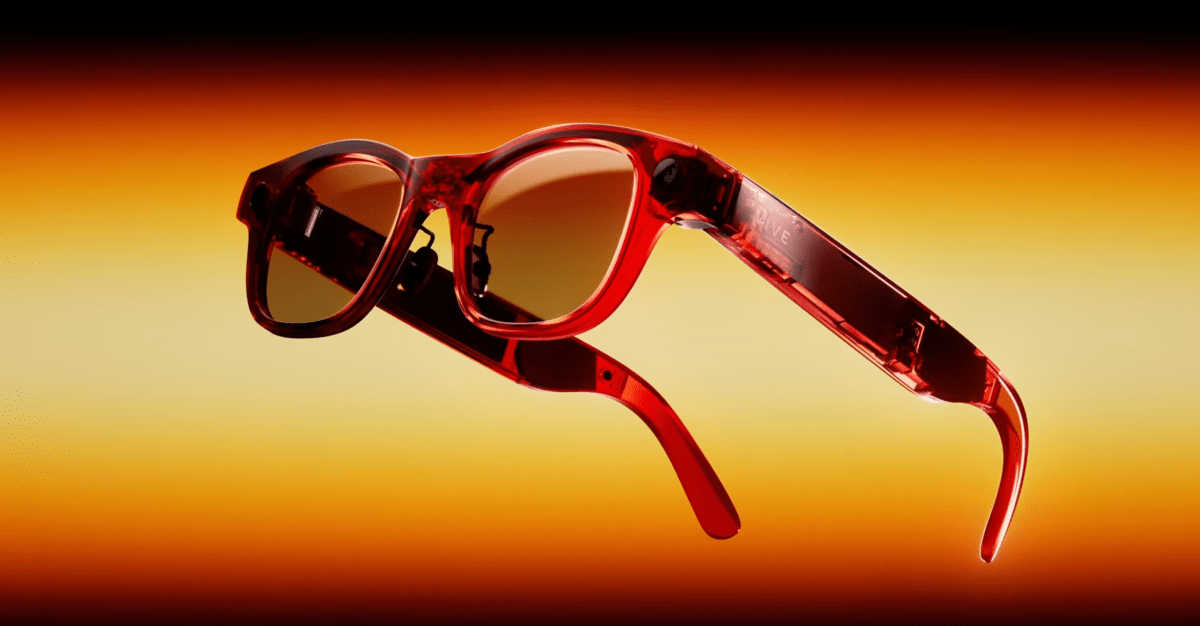
HTC Launches Vive Eagle AI Glasses with Built-In Assistant, 12MP Camera
Sources: https://www.theverge.com/news/759221/htc-vive-eagle-ai-smart-glasses, theverge.com
TL;DR
- HTC unveils the Vive Eagle AI glasses with a built-in AI assistant.
- AI features include text translation, image translation across 13 languages, reminders, and restaurant recommendations.
- 12MP ultrawide camera, built-in speakers, Zeiss sun lenses, and a lightweight 49-gram frame.
- Taiwan-only availability at around $520; it’s unclear if HTC plans a North American or European rollout. The Verge
Context and background
The broader tech landscape has seen several major players exploring AI-powered glasses or smart spectacles, including Meta, Google, Samsung, and even speculation around Apple’s direction. In this evolving market, HTC’s Vive Eagle positions itself as a direct rival to established smart-glasses lines from Meta’s Ray-Ban and Oakley brands. The Verge notes that smart spectacles are rapidly becoming a leading category in consumer tech as AI features become more capable and embedded into everyday wearables. This backdrop helps frame why HTC would pursue an option like Vive Eagle, which couples conventional eyewear with on-device AI capabilities. The Verge
What’s new
The Vive Eagle introduces a built-in Vive AI voice assistant designed to translate text and analyze the wearer’s surroundings. Among the features highlighted are AI-powered image translation that can translate what the user sees into 13 languages, along with the ability to translate text on the fly, record reminders, and offer recommendations or notes. HTC emphasizes that the device weighs about 49 grams, roughly the same as Meta’s Ray-Ban smart glasses, and ships with Zeiss sun lenses. Frame options include red, brown, gray, or black. Pricing lands around $520 USD, and the glasses are currently available for purchase in Taiwan. No official confirmation has been provided about a North American or European launch at this time. The Verge
Why it matters (impact for developers/enterprises)
HTC’s Vive Eagle demonstrates how AI-powered functionality is being integrated into wearable form factors beyond phones and laptops. The inclusion of a translation-focused AI assistant and image translation across multiple languages indicates potential avenues for developers to build or optimize applications that rely on real-time language processing and context-aware assistance. The device’s combination of a camera, audio output, and voice-driven AI could influence how brands think about hands-free interfaces, multilingual support, and on-device AI capabilities in consumer hardware. It also underscores competition in the AI glasses space, with Meta already pursuing similar directions and other tech firms weighing their own AR eyewear strategies. The Verge
Technical details or Implementation
- AI assistant: Built-in Vive AI voice assistant capable of translating text, providing reminders, and suggesting recommendations. It also supports image-related translation tasks (13 languages).
- Camera: 12MP ultrawide camera for capturing wide scenes and enabling translation of visual content.
- Audio: Built-in speakers for immediate feedback and interaction.
- Optics: Zeiss sun lenses for high-quality optics.
- Form factor: 49-gram weight with frame color options in red, brown, gray, or black.
- Availability and pricing: Taiwan-only availability at around $520 USD, with no confirmed plan to bring to North America or Europe.
Key takeaways
- HTC is expanding into AI-assisted wearables with Vive Eagle.
- The glasses combine language translation, image translation, and AI-powered reminders with a camera and audio output.
- Weight, lenses, and frame options place Vive Eagle in the consumer-friendly AR glasses segment, albeit with a regional launch limitation.
- The Taiwan-only release leaves room for future regional expansion depending on market reception and logistics.
FAQ
- Q: What is Vive Eagle? A: It is HTC’s AI glasses featuring a built-in Vive AI assistant, a 12MP ultrawide camera, and Zeiss sun lenses.
- Q: Where is it available? A: It is currently available in Taiwan; HTC has not announced a North American or European rollout. The Verge
- Q: How many languages can the image translation handle? A: Image translation supports 13 languages.
- Q: How much do Vive Eagle glasses cost? A: They are priced around $520 USD.
References
More news
First look at the Google Home app powered by Gemini
The Verge reports Google is updating the Google Home app to bring Gemini features, including an Ask Home search bar, a redesigned UI, and Gemini-driven controls for the home.
Meta’s failed Live AI smart glasses demos had nothing to do with Wi‑Fi, CTO explains
Meta’s live demos of Ray-Ban smart glasses with Live AI faced embarrassing failures. CTO Andrew Bosworth explains the causes, including self-inflicted traffic and a rare video-call bug, and notes the bug is fixed.
OpenAI reportedly developing smart speaker, glasses, voice recorder, and pin with Jony Ive
OpenAI is reportedly exploring a family of AI devices with Apple's former design chief Jony Ive, including a screen-free smart speaker, smart glasses, a voice recorder, and a wearable pin, with release targeted for late 2026 or early 2027. The Information cites sources with direct knowledge.
Shadow Leak shows how ChatGPT agents can exfiltrate Gmail data via prompt injection
Security researchers demonstrated a prompt-injection attack called Shadow Leak that leveraged ChatGPT’s Deep Research to covertly extract data from a Gmail inbox. OpenAI patched the flaw; the case highlights risks of agentic AI.
Predict Extreme Weather in Minutes Without a Supercomputer: Huge Ensembles (HENS)
NVIDIA and Berkeley Lab unveil Huge Ensembles (HENS), an open-source AI tool that forecasts low-likelihood, high-impact weather events using 27,000 years of data, with ready-to-run options.
Scaleway Joins Hugging Face Inference Providers for Serverless, Low-Latency Inference
Scaleway is now a supported Inference Provider on the Hugging Face Hub, enabling serverless inference directly on model pages with JS and Python SDKs. Access popular open-weight models and enjoy scalable, low-latency AI workflows.





